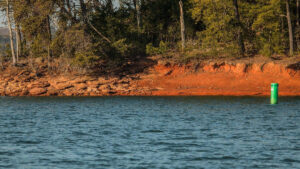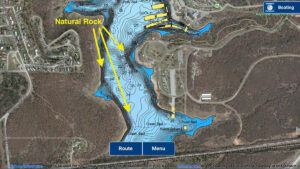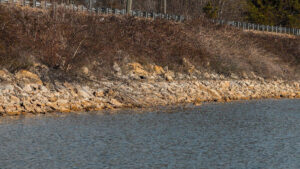As water temperatures begin to warm throughout most of the country, crankbaits are back on the menu for bass. Though the fishing is still tough in most areas, late winter and early spring offer bass anglers fantastic crankbait fishing opportunities.
2016 Bassmaster Angler of the Year Gerald Swindle is all too familiar with late winter cranking, as it is one of his favorite ways to catch bass this time of year. He’s a big believer that the smallest details in both lure choice and location make a big difference.
Swindle’s go-to plugs
Swindle sticks with two tried-and-true Rapala crankbaits this time of year: The No. 7 Shad Rap and the DT6.
Void of a specific hard-bait sponsor, Swindle is willing and able to show bass any variety of crankbait in order to get the most bites. In cold-water scenarios, no plugs give Swindle more confidence than the two mentioned above.
“I stick with wood crankbaits that have tight vibration for winter cranking,” Swindle said. “Both a Shad Rap and a DT6 have a very tight action and no rattles. I don’t want any unnecessary movement or noise out of a plug if I am cranking in the winter. The fish are still lethargic and are not real excited about biting anything. By keeping it subtle you increase your odds of getting bit.”
You’ll notice both of these lures are shallow to mid-depth crankbaits. Generally speaking, if Swindle is throwing a crankbait in cold water, he’s fishing it relatively shallow.
“I rarely, if ever, crank any deeper than ten feet in the winter,” Swindle said. “To dredge down past 10 feet deep, you have to start using bigger, more aggressive lures and speeding up your retrieve to get the bait to the bottom. Instead I’ll throw those same small Rapala plugs and use lighter line if I am wanting to crank that 7 to 8-foot depth.”
Three winter cranking hotspots
Swindle is not only particular with the lure he is cranking, but he is also very mindful of the areas he targets when the water is cold and the bass are still sluggish. Years of experience have taught Swindle to look for these three targets if the shallow wintertime cranking bite is hot.
No. 1: Clay banks
Though there is nothing visually stunning about them, flat clay banks can be first-rate winter cranking locations, according to Swindle.
“Clay banks get overlooked by a lot of anglers but bright red clay banks can be incredible wintertime cranking targets,” he said. “That red clay holds heat really well and it seems as though bass like to get up there and just lay on it. A lot of bass I catch off clay banks in the winter have that red clay mud all over their bellies, which tells me they are just up there wallowing around.”
These red clay banks soak up a tremendous amount of heat when the sun gets high in the afternoon, and bass will use these banks to sun themselves when the water is frigid.
No. 2: Natural rock
Another location Swindle focuses on is any natural rock available in a body of water. Bluff walls, points and channel swings that come near the bank are Swindle’s priorities when looking for natural rock on a given fishery.
“Natural rock is another prime-time winter cranking location,” Swindle said. “By natural rock I am talking any rock or hard spots that occur naturally in a lake. These areas are usually pretty easy to find, just look for channel swings or prominent points, either on the main lake or just inside a creek. These kinds of places, where water has been putting constant pressure on a spot for years, will usually have some kind of naturally exposed rock.”
Because these areas are generally deeper, Swindle positions his boat very close to the bank and parallels the shoreline with his plug. Swindle tries to maintain bottom contact as much as possible, causing reaction strikes with bass using the available rock as an ambush point.
No. 3: Riprap
Riprap banks may be Swindle’s last cold-water cranking hotspot, but they are often his first stop on a lake in late winter scenarios.
“If you’re on a lake that offers it, you always want to consider riprap one of your main winter targets,” Swindle said. “Riprap holds heat, holds lots of crawfish and baitfish, and usually has good depth around it. There are always bass around riprap in the winter no matter where you are and how cold it is.”
As a general rule, Swindle looks for riprap that has some wind blowing onto it. Similarly to how he attacks a lake’s natural rock, Swindle parallels riprap with his crankbait, keeping it in the strike zone as long as possible.















